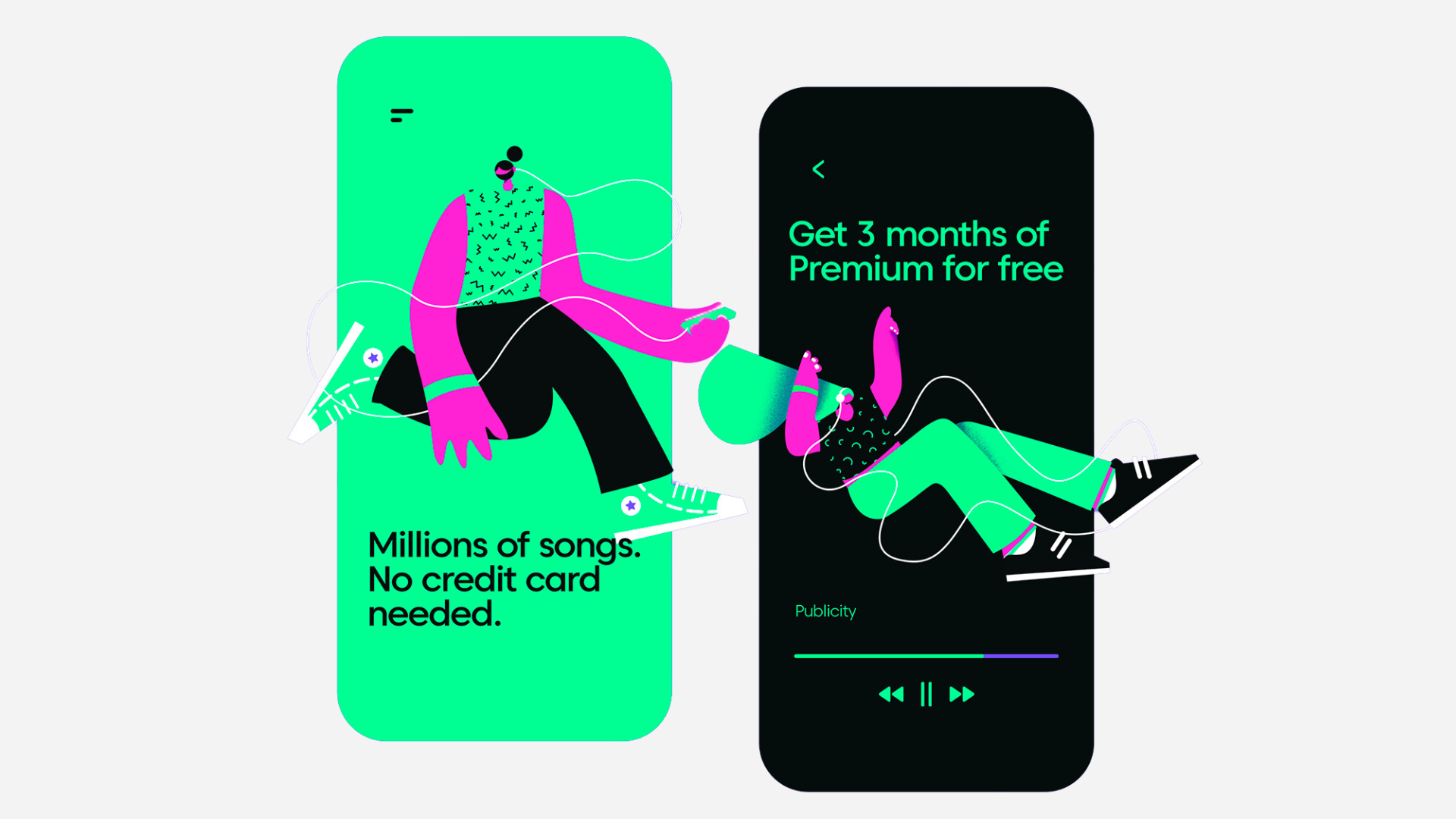
Spotify Daylists: Unveiling the UI, UX, and ML Magic Behind Personalized Music
With over 515 million active users as of Q2 2023, Spotify has solidified its position as a global leader in music streaming. While boasting impressive user growth (22% year-over-year), subscriber growth lagged slightly at 15%. This suggests a large portion of users are enjoying the free tier, highlighting the need to enhance the overall user experience.
One key area of focus for Spotify is content discovery. Despite a massive library of 100 million songs and 5 million podcasts, users can get stuck in repetitive listening patterns or struggle to find new favorites.
Table of Contents
The Challenge: Breaking Free from Playlist Purgatory
Many users, myself included, have fallen victim to the “playlist rut.” We get stuck listening to the same familiar tunes, yearning for fresh discoveries. Spotify is tackling this challenge head-on, aiming to refine their audio discovery process and help users break free from the cycle of repetitive listening.

I. Birth of Spotify Daylists
Spotify Daylists transcend the limitations of static playlists by offering a dynamic, hyper-personalized music experience. This novel feature leverages the power of machine learning to curate music that seamlessly adapts to your mood and the time of day. Let’s delve into the magic behind Daylists, exploring the user interface (UI), user experience (UX), and the ingenious machine learning that personalizes your music journey.
II. Breakdown of Spotify Daylists: A User’s Perspective
UI Analysis:
The visual design of Spotify Daylists is characterized by a clean and intuitive layout that prioritizes ease of use. Upon opening the Spotify app, users are greeted with a visually appealing grid of Daylists, each represented by vibrant cover art that encapsulates the mood or theme of the playlist. The color scheme is consistent with Spotify’s branding, featuring a combination of black, white, and Spotify’s signature green accents, which creates a cohesive and recognizable aesthetic.
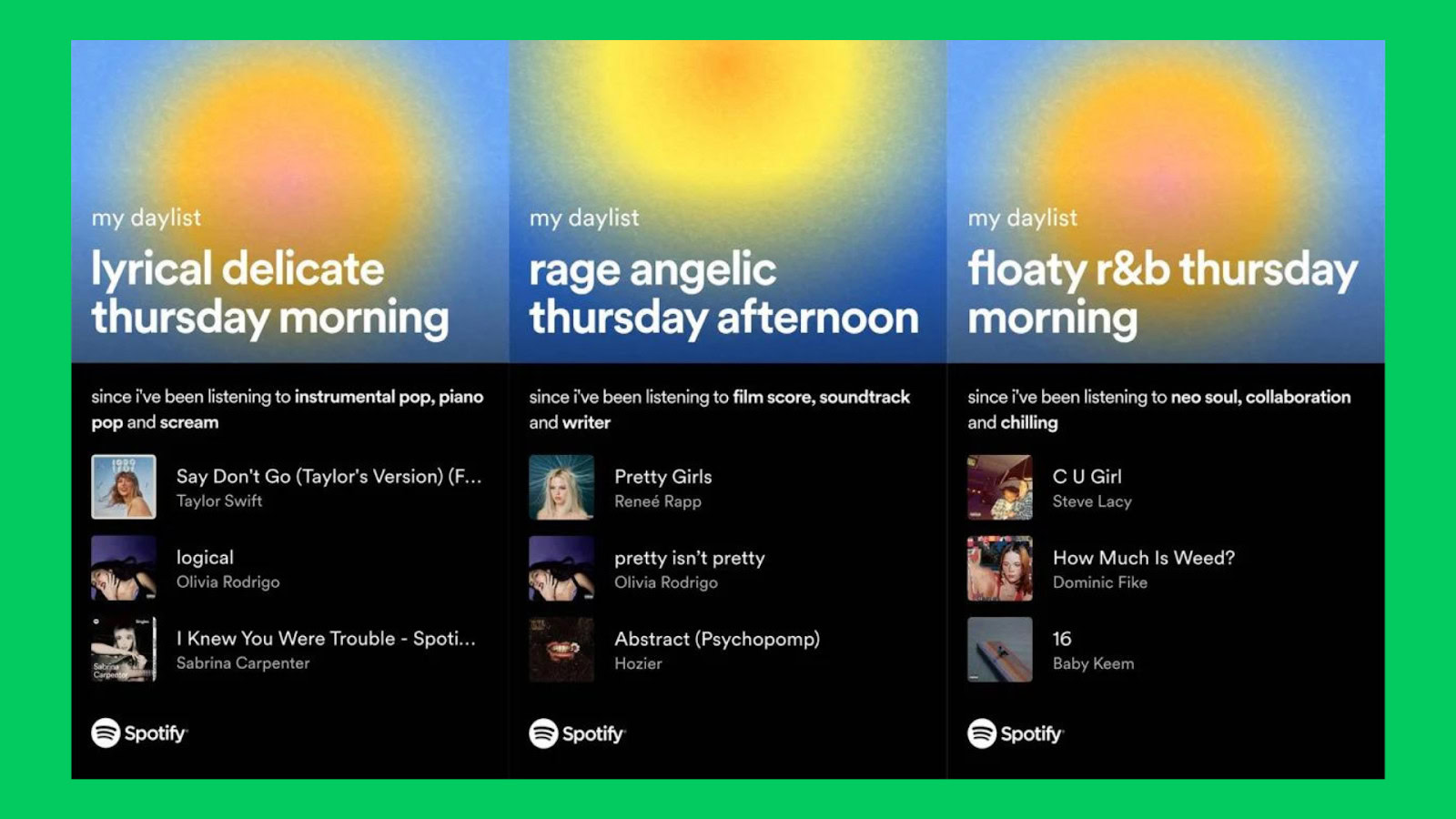
The information hierarchy within Daylists is well-defined, with the title and description prominently displayed beneath each playlist cover. This allows users to quickly grasp the theme or mood of the playlist before diving in. Moreover, the inclusion of play counts and follower numbers provides social proof and helps users gauge the popularity and relevance of each Daylist.
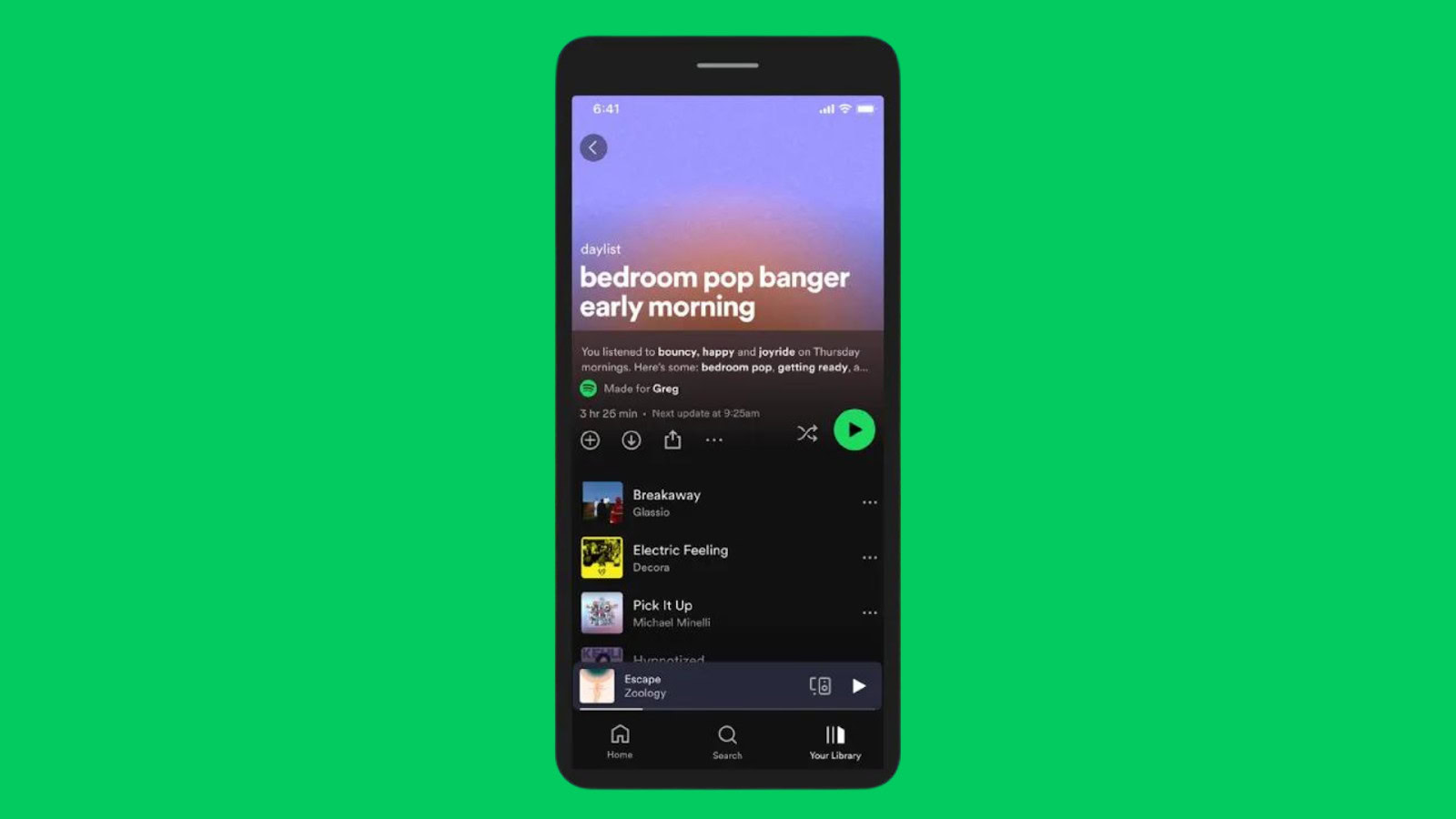
One unique aspect of Daylists’ UI is the inclusion of interactive elements such as the “Like” button, which allows users to express their preferences and influence future recommendations. Additionally, the “Shuffle Play” and “Add to Library” buttons provide convenient options for immediate playback or saving for later enjoyment, enhancing the overall user experience.
UX Exploration:
Accessing Daylists on Spotify is a straightforward process, with dedicated tabs for different categories such as “Genres & Moods,” “Charts,” and “New Releases.” Users can easily navigate these tabs to discover Daylists tailored to their specific preferences or explore new genres and trends.
Once inside a Daylist, users have the flexibility to browse through tracks, skip between songs, or replay their favorite tunes with minimal friction. The seamless integration of playback controls within the UI ensures a fluid and uninterrupted listening experience.
User feedback mechanisms play a crucial role in refining future Daylists and enhancing personalization. The “Like” and “Dislike” buttons allow users to signal their preferences, enabling Spotify’s algorithms to fine-tune recommendations and tailor Daylists to individual tastes. This iterative feedback loop fosters a sense of ownership and empowerment among users, as they actively contribute to shaping their music discovery journey.
III. Powering Personalization: Machine Learning in Action
At its core, machine learning is like having a super-smart assistant that learns from data to make predictions or decisions without being explicitly programmed. Imagine you’re teaching a friend to recognize different types of fruit by showing them pictures. As they see more examples, they start to understand the patterns and can identify apples from oranges. Similarly, ML algorithms analyze vast amounts of data to recognize patterns and make predictions or recommendations.
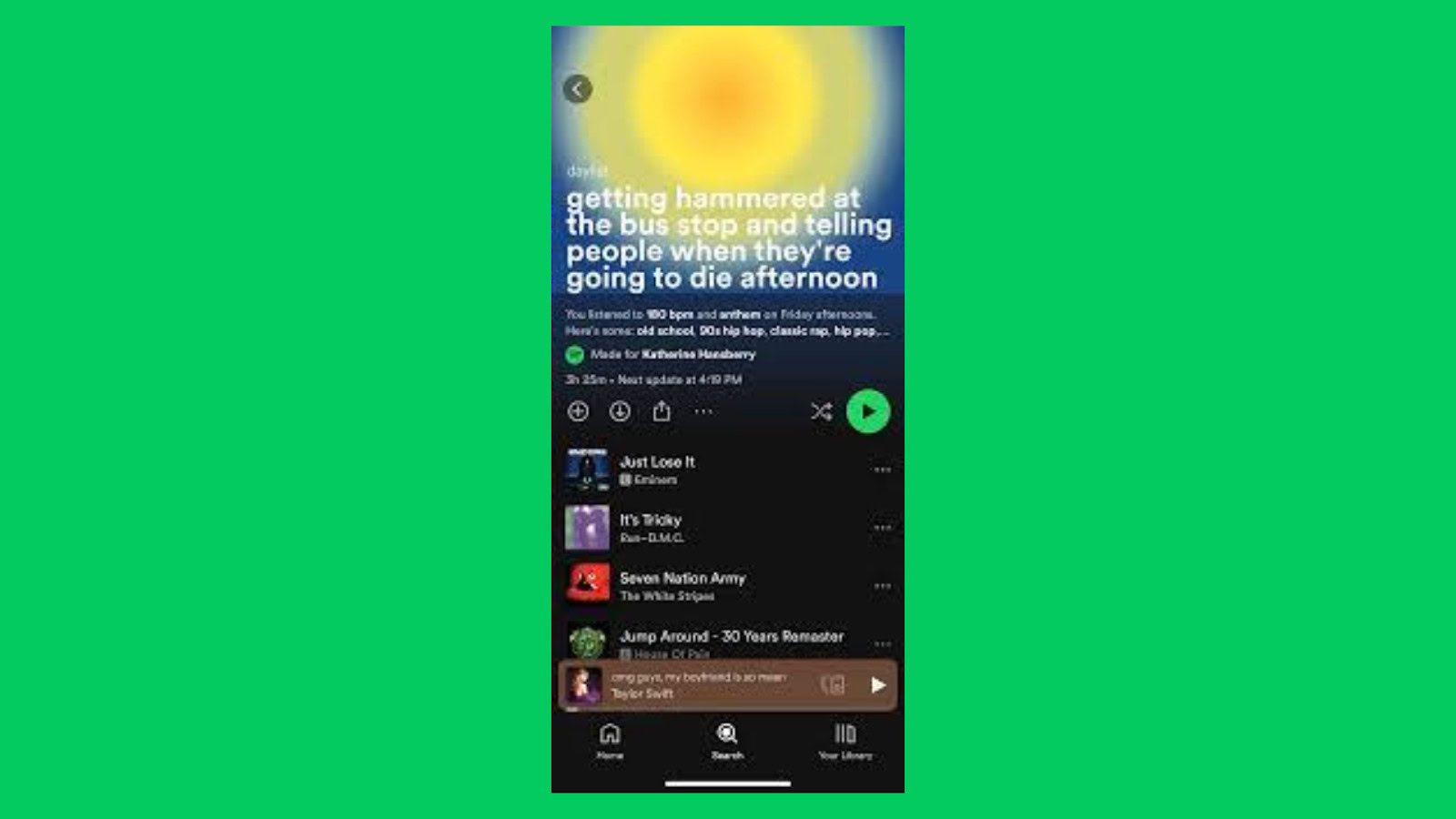
How Spotify Uses ML for Daylists:
Spotify utilizes ML algorithms to analyze user listening habits and preferences, creating personalized playlists like Daylists. When you listen to music on Spotify, the platform gathers data on the songs you play, skip, like, or dislike. These interactions provide valuable insights into your musical taste, which are then fed into ML models to generate recommendations tailored to your preferences.
Analyzing User Listening Habits:
Let’s say you’re into upbeat music for your workout sessions. Spotify’s ML algorithms analyze your listening history and identify patterns associated with high-energy tracks. They might notice that you often play songs with fast tempos, strong beats, and uplifting melodies during workout sessions. Based on these insights, the ML model can recommend similar tracks for your workout playlist.
For instance, Imagine you’ve been listening to a mix of pop, hip-hop, and electronic dance music (EDM) during your recent workouts. Spotify’s ML algorithms take note of these genres and analyze the characteristics of the songs you’ve enjoyed the most. They might detect common traits such as high BPM (beats per minute), catchy hooks, and energetic instrumentals.
Using this information, the ML model scours Spotify’s vast music library to find tracks that match your preferences. It might recommend upbeat pop anthems with infectious rhythms, dynamic hip-hop tracks with motivating lyrics, or pulsating EDM bangers guaranteed to keep you pumped up during your workout.
IV. The Art and Science of Music Curation
Algorithmic music selection, like Daylists, presents both exciting opportunities and potential drawbacks.
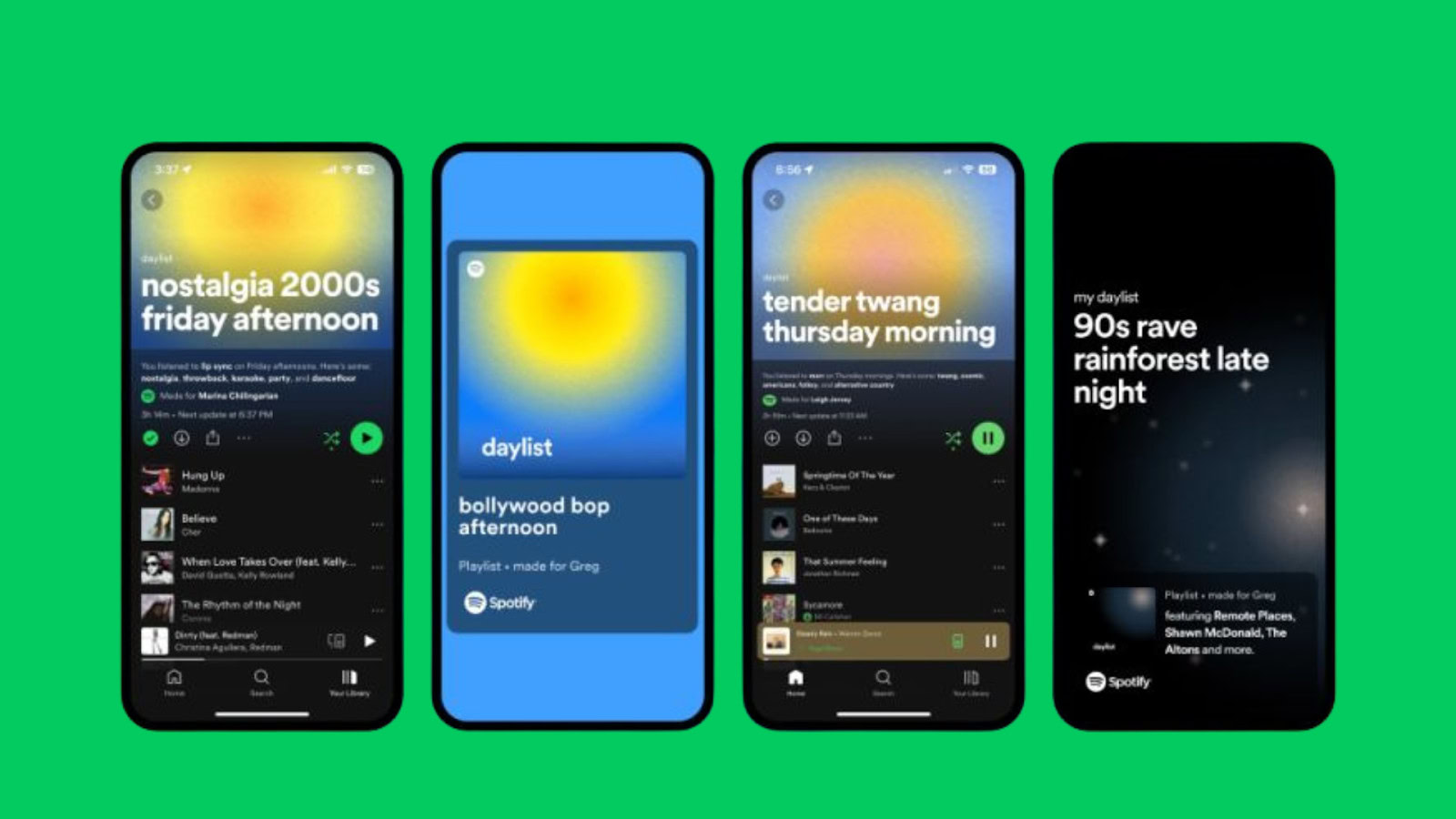
Benefits
One undeniable advantage is the ability to discover hidden gems. Daylists can expose you to new genres, artists, and tracks you might have otherwise overlooked. This constant exploration keeps your music library fresh and exciting. Another perk? Reduced decision fatigue. No more endless scrolling through endless playlists. Daylists curate music specifically for the moment, taking the guesswork out of choosing what to listen to.
Drawbacks
While algorithms are powerful tools, some users might feel confined by the recommendations. There’s a risk of getting stuck in a musical echo chamber, only encountering music that aligns with your existing listening habits. Additionally, the lack of granular control over curation can be frustrating for those who prefer a more hands-on approach to playlist building.
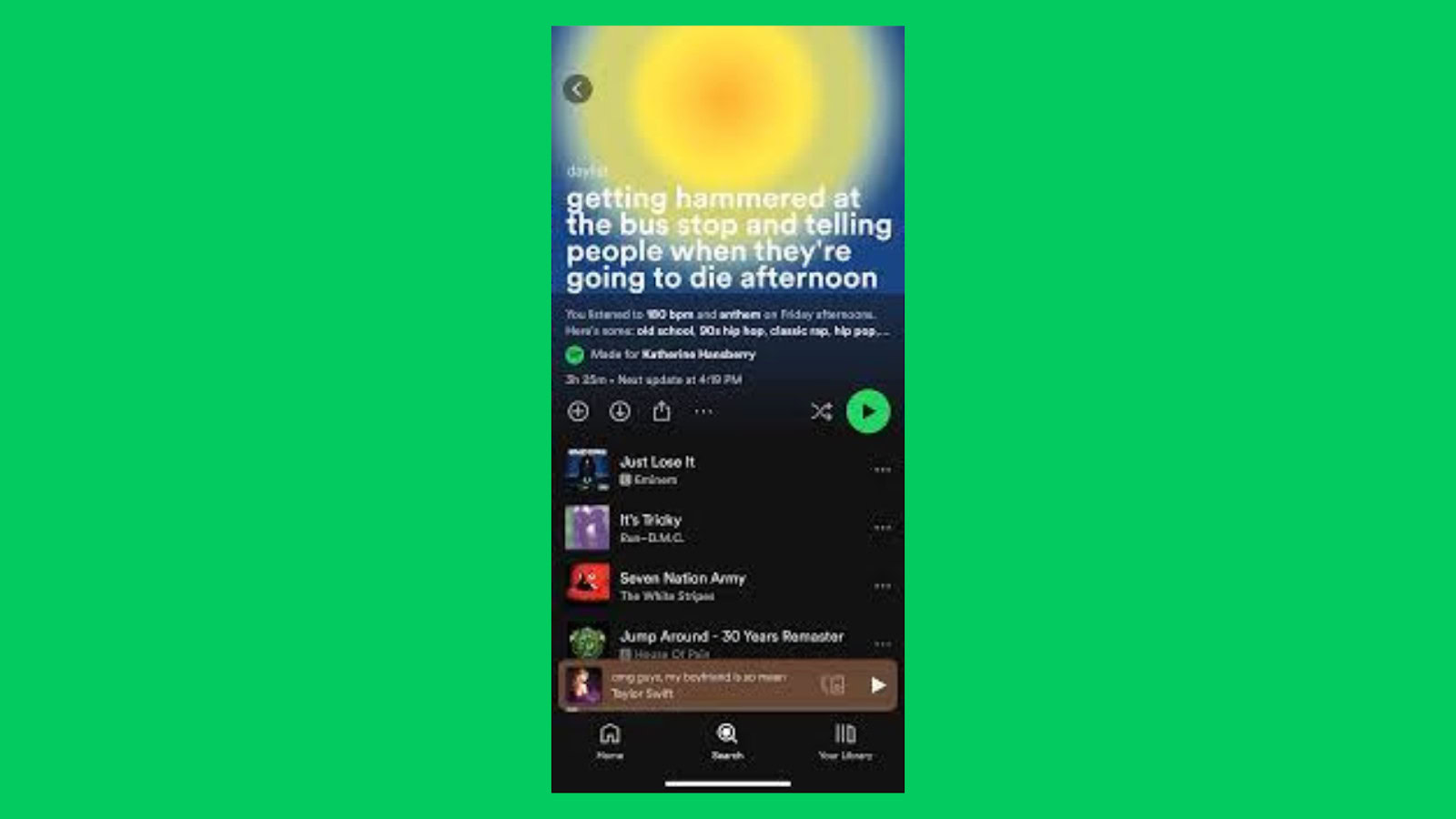
Striking a Balance
The key to success lies in achieving a balance. Luckily, Spotify seems to understand this. Daylists might offer mood filters or genre preferences, allowing users to tailor recommendations to their current mood or preferred style. This empowers users to guide the algorithm, ensuring they’re exposed to new music that still resonates with their tastes.
Furthermore, Spotify can provide the option to create custom Daylists alongside the ML-generated selections. This empowers users to curate playlists for specific occasions or moods, offering the perfect blend of personalization and control.
V. The Future of Spotify Daylists and Personalized Music
The future of music streaming personalization with machine learning is brimming with exciting possibilities. Imagine Daylists that seamlessly integrate with your fitness tracker, dynamically adjusting workout playlists based on your heart rate and workout intensity. Facial recognition software or mood-tracking apps could further personalize Daylists, curating music that perfectly complements your emotional state.
These advancements, fueled by AI, hold immense potential for a more enriching listening experience. Daylists transcend the role of a simple music player, transforming into an intelligent companion that anticipates your needs and tailors music to enhance every moment. As machine learning continues to evolve, the possibilities for personalized music curation are truly limitless. Get ready for a future where your music choices feel less like selections and more like an ongoing conversation with a constantly learning AI, ensuring your soundtrack perfectly complements the ever-unfolding story of your life.
Take your company to the next level and get results with our world class user experience, interface design and implementation.
Get a FREE 30 min Strategy Session

Related posts
Why Pinterest’s Personalization Strategy Could Revolutionize Digital Discovery
Have you ever opened Pinterest and felt like the platform knows exactly what you want—before you even realize it yourself? […]
Designing with Integrity: The Ethical Designer’s Handbook on Dark Patterns
In the digital age, where user experience reigns supreme, the design landscape is constantly evolving. However, amidst the pursuit of […]
How Apple Revolutionised The Design Landscape in 6 Ways
“Design is how it works, not how it looks.” – Steve Jobs Apple has been at the forefront of design […]
Creative product design that gets results
Take your company to the next level with world class user experience and interface design.
get a free strategy session



